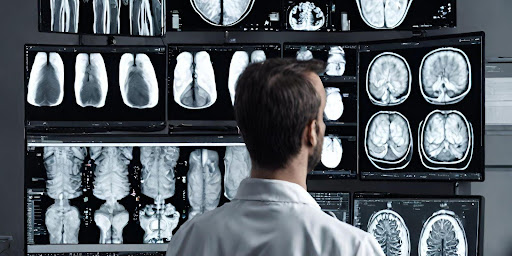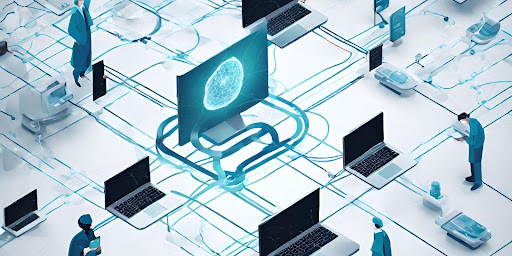
In recent years, the healthcare industry has undergone a transformative revolution, marked by groundbreaking innovations in medical technology and practices. These advancements not only enhance patient care but also streamline healthcare processes, making them more efficient and accessible. We will explore some of the notable innovations that are shaping the future of healthcare.
Telemedicine and Remote Patient Monitoring:
Telemedicine refers to the delivery of healthcare services through digital communication channels, allowing patients to consult with healthcare professionals remotely. This could involve video calls, phone calls, or even secure messaging platforms. Telemedicine has become a game-changer, providing several advantages:
Accessibility:
Telemedicine breaks down geographical barriers, ensuring that individuals, especially those in remote or underserved areas, can access quality healthcare without the need for extensive travel.
Convenience:
Patients can schedule virtual appointments at their convenience, reducing the need for time-consuming and often costly visits to healthcare facilities. This is particularly beneficial for individuals with chronic conditions who require regular check-ups.
Cost-Effective:
Telemedicine can be a cost-effective alternative for both patients and healthcare providers. It minimizes travel expenses and reduces the strain on healthcare facilities, allowing for more efficient resource allocation.
Timely Intervention:
Immediate access to healthcare professionals enables quicker diagnosis and intervention, which is crucial for conditions that require prompt attention.
Remote Patient Monitoring (RPM):

RPM takes telemedicine a step further by utilizing technology to collect and transmit patient data to healthcare providers in real-time. This can include vital signs, medication adherence, and other relevant health metrics. RPM offers several advantages:
Continuous Monitoring:
RPM enables healthcare providers to monitor patients’ health continuously, providing a comprehensive understanding of their condition beyond periodic office visits. This is particularly beneficial for those with chronic illnesses.
Early Detection of Issues:
Real-time data allows healthcare providers to identify potential issues early on, preventing complications and reducing the likelihood of hospitalizations.
Patient Empowerment:
RPM encourages patients to actively participate in their healthcare by promoting self-monitoring and awareness. This empowers individuals to make informed decisions about their health.
Improved Outcomes:
The combination of telemedicine and RPM often leads to improved health outcomes, as patients receive timely interventions and personalized care plans based on their real-time data.
Artificial Intelligence in Diagnostics:

Artificial intelligence (AI) has significantly improved diagnostic accuracy and speed. Machine learning algorithms can analyze vast amounts of medical data, aiding in the early detection of diseases such as cancer and predicting potential health risks. AI has also streamlined medical imaging interpretation, allowing for quicker and more precise diagnosis.
Wearable Technology for Personalized Healthcare:
Wearable devices, such as smartwatches and fitness trackers, have become integral to personalized healthcare. These gadgets monitor vital signs, track physical activity, and provide real-time health data. The information collected helps individuals take proactive measures to maintain or improve their health, and healthcare providers can use it to make more informed decisions during patient consultations.
3D Printing in Medicine:
The application of 3D printing technology has revolutionized the healthcare industry by enabling the production of personalized medical devices, prosthetics, and even organ transplants. This innovative approach allows for customized solutions tailored to the unique needs of individual patients, ultimately improving treatment outcomes.
Robotics in Surgery:
Robotic-assisted surgery has become increasingly prevalent, allowing surgeons to perform complex procedures with enhanced precision. Robots can provide greater dexterity and accuracy, leading to smaller incisions, reduced recovery times, and improved patient outcomes. This technology is reshaping the landscape of surgical interventions across various medical specialties.
Blockchain for Health Data Management:
Originally known for its application in cryptocurrencies like Bitcoin, blockchain has evolved into a transformative force in the healthcare sector, offering solutions to challenges associated with health data management. This article explores the advancements in medical technology and practices driven by blockchain, emphasizing its role in enhancing security, interoperability, and patient-centric care.
Enhanced Security and Privacy:
Blockchain’s decentralized and immutable nature ensures enhanced security and privacy in health data management. Traditional centralized systems are vulnerable to data breaches, but blockchain uses cryptographic techniques to secure information. Each block in the chain contains a unique identifier and is linked to the previous block, making tampering virtually impossible. This robust security framework is crucial for protecting sensitive patient information, ensuring confidentiality, and meeting regulatory compliance standards such as HIPAA.
Interoperability and Seamless Data Exchange:

One of the significant challenges in healthcare is the lack of interoperability between different systems and platforms. Blockchain facilitates seamless data exchange across disparate healthcare systems, enabling a more comprehensive and cohesive approach to patient care. Health records stored on the blockchain can be accessed and updated securely by authorized parties, improving coordination among healthcare providers and ensuring a holistic view of a patient’s medical history.
Streamlined Clinical Trials and Research:
Blockchain accelerates the clinical trial process by providing a transparent and traceable platform for managing trial data. Smart contracts, self-executing contracts with the terms of the agreement written into code, automate processes such as patient consent, data collection, and result dissemination. This reduces administrative burdens, enhances transparency, and ensures the integrity of clinical trial data. Consequently, medical researchers can access accurate and reliable information more efficiently, leading to faster advancements in medical treatments.
Empowering Patients with Data Ownership:
Blockchain empowers patients by giving them greater control and ownership of their health data. Through decentralized identity verification, patients can grant access to their information only to trusted healthcare providers, ensuring data privacy and consent. This shift towards patient-centric care fosters collaboration, transparency, and a more personalized approach to medical treatment.
Supply Chain Integrity for Pharmaceuticals:
Blockchain can be utilized to establish transparency and traceability in the pharmaceutical supply chain. By recording each step of the production, distribution, and sale of medications on a blockchain, stakeholders can verify the authenticity of drugs, reducing the risk of counterfeit medications entering the market. This not only protects patient safety but also enhances the overall efficiency of the pharmaceutical supply chain.
Conclusion:
The innovations in medical technology and practices discussed above underscore the dynamic nature of healthcare. From telemedicine to 3D printing and blockchain, these advancements are not only improving patient outcomes but also reshaping the way healthcare is delivered. As we move forward, it is essential for healthcare professionals, policymakers, and technology developers to collaborate in harnessing these innovations for the betterment of global healthcare systems. Embracing these advancements will undoubtedly pave the way for a healthier and more connected future.
Recent Comments